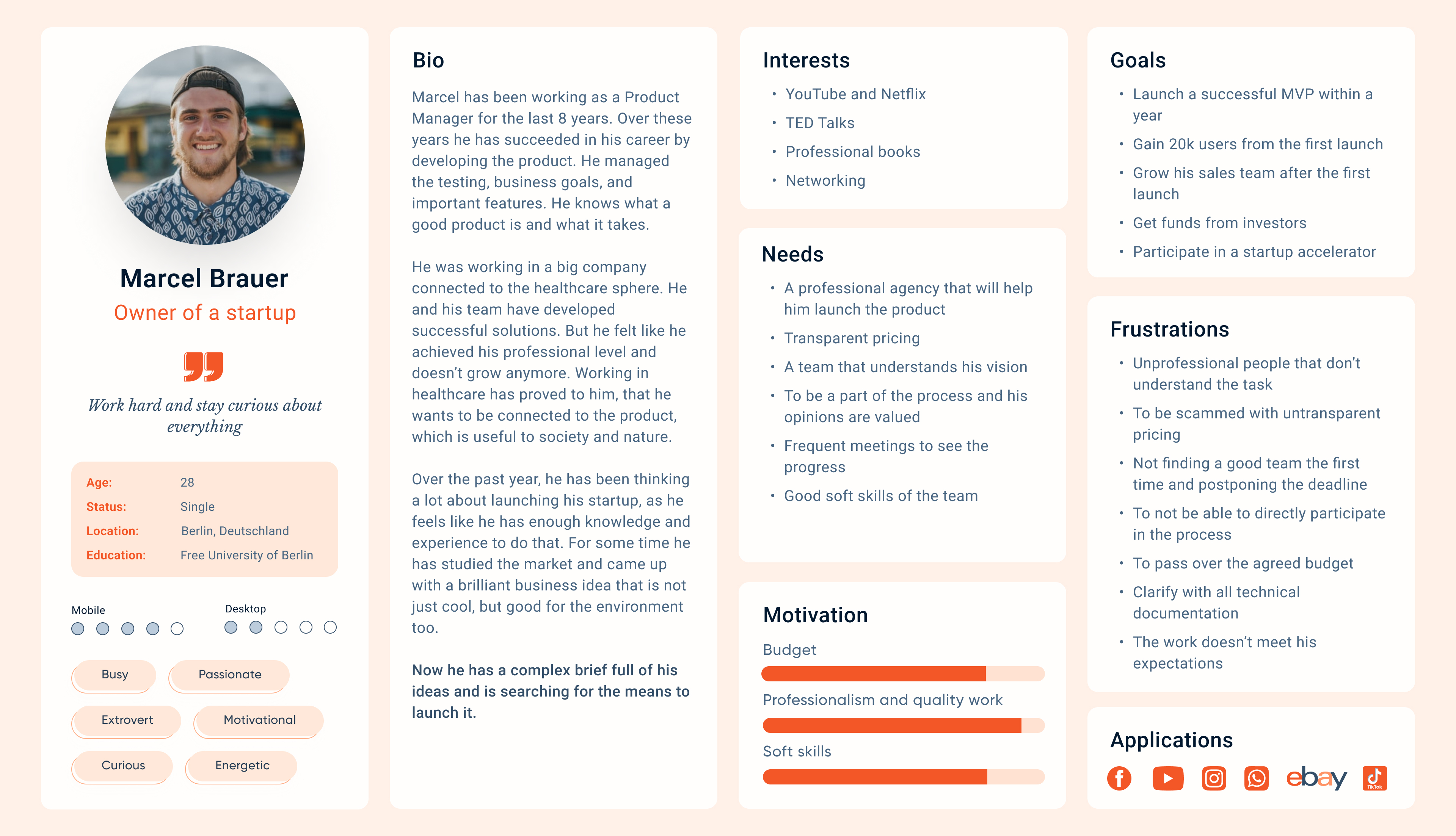Define MVP - but do it right!
How do you identify your Minimum Viable Product
If you have an idea for a new product, you usually want to develop it as quickly as possible and place it competitively on the market.
Rarely do founders succeed in defining their Minimum Viable Product (MVP), i.e. the first minimally functional version of a product, without difficulty. In this post, we want to help you as a founder to define your MVP so that it really is one and fulfills your goals exactly as you want it to.
Why is an MVP so important
The planning and development of a product usually involves several people who do not always immediately agree on the scope of functions. In addition to possibly differing views, there are also competitive markets and fluctuating demand. Most importantly, however, the product is not developed past the customer's needs. The most necessary core functions are defined for the MVP so that a timely market launch can be pursued. It enables important insights into the target group and the benefits they receive from the product, and these insights can be continuously incorporated into (further) development.
To define this first version of your product, you don't need every feature ever imaginable. It is sufficient to identify for now only the feature(s) it needs to present the biggest USP in combination with a good user experience (UX). The best person to do this is an experienced UX designer, as many tasks in the definition process of an MVP fall within their scope. Among other things, UX designers specialize in designing the perfect ScreenFlow with the corresponding arrangement of elements on the page based on the principles and insights they have gained about the user. However, with empathy and some research effort, even a founder without this background is able to define the scope of the MVP. Start small is the motto here: which niche, i.e. which smallest possible definable user group (with sufficient volume) do you want to serve with your product? What problems or needs does this target group have and how can your product help? A good foundation is essential for defining the MVP.
Four steps to MVP definition:
 Even if your MVP is initially a slimmed-down preliminary stage, a prototype of your product, so to speak, it should be considered a complete product, which is functional, user-friendly, appealing and useful. Especially in the online sector, the MVP is used to study user behavior in order to incorporate the insights gained into further development.
Even if your MVP is initially a slimmed-down preliminary stage, a prototype of your product, so to speak, it should be considered a complete product, which is functional, user-friendly, appealing and useful. Especially in the online sector, the MVP is used to study user behavior in order to incorporate the insights gained into further development.
Step 1
You define the niche, market niche if applicable, and associated persona. For founders with a vision for your product, it is often difficult to reduce the target group to a small circle (with the most potential). After all, it is usually assumed that the world has just been waiting for the product you have just conceived, planned and developed. We can recognize the potential of a target group by the fact that we can target them well and play them with our product in order to persuade them to buy. If the target group is particularly willing and able to buy, this is of course not a disadvantage. Predefined profiles like the one in this example can help us here:
Step 2
You work out the exact problems for the defined persona. A very valuable basis here is to describe the daily routine of the desired user, define his problems/needs and perhaps outline his desires. If the potential user has several problems, it is recommended to focus on a maximum of two to three of them. Before a visitor to your site becomes a customer who buys your product or service, he goes through complex decision-making processes. That's why it's especially important to create a so-called user journey, i.e. to analyze and correctly interpret the customer's behavior.
Step 3
You work out how your platform can solve the user's problems. Here we come back to the user journey. We put our platform or our application at the points where the user usually has this problem and think about which functions are needed for this in our application. We put these functions in our so-called backlog, which contains the collected requirements for the software to be developed.
Step 4
You prioritize. Prioritization is the basis for the perfect MVP scope. However, this prioritization should not be done simply based on gut feeling but on data. Of course, it doesn't work completely without assessments and opinions, but a prioritization framework, such as the ICE framework, helps to make decisions. The focus must always be on the (later) user. Even in the smallest function set, the user must recognize a decisive advantage in your product or service.
Conclusion
We have shown that developing an MVP definition is not witchcraft and, with a little effort, can be done even by people from outside the industry. Nevertheless, questions or the desire for professional involvement may arise. If this is the case for you, don't hesitate to contact us. We would be happy to discuss with you the extent to which we can support you - for example, in the form of a workshop to develop a promising MVP.
